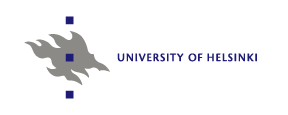Protocol Software Engineering: Using Telelogic SDT Suite
This page contains local information in Helsinki about the tool and the submission of this task:
Tool location
The tool can be run only on IT department's kruuna. The code with all the material is stored in our departments (CS) file server.The password to kruuna is the same you use with mappi-mail server, oodi-system or alma. It is not the password of our department's linux environment.
- ssh kruuna
- /home/fs-0/SDL/bin/sdlsuite
Please notice that occationally the starting of the tool seems to fail in the first attempt. The second will then start the tool normally.
You have two alternatives, where to store your design. You can use IT departments home directory (like /h/9/tkol/username). The number and username may vary.
The other alternative is to store your design in your home directory at CS department. This way you can access it also from our Linux environment. Please notice that the short form /home/fs/username does not work. You need to use the longer form /home/fs-2/0/username, where the numbers vary. If you want to use this file, you need to now know own numbers. You can check them for example in melkki
- ssh melkki
- pwd
You need to also change the directories in the tool to match your choise
of home directory. Check file -> set directories to see the current used directories.
Help
Help files can be accessed at least using any web browser in the CS
Linux using link
file:///fs-0/SDL/locale/english/help/htmlhlp/online_contents.html.
If you access the files directly, then you cannot use the search
functionalities included in the tool.
Printing
Please notice that it is wise to print the diagrams to file in
fs-directory and then print them to the closed printer using
department's linux machines. You are all the time navigating between IT
ans CS departments and their environments.
How?
A good way of learning to use the tool, is to do the tutorials of the SDL Suite 5.1. Getting Started manual. Section 2 Introduction to the SDL Suite and sections 3 to 5 are good ones to lear the functionality of the tool. Section 3 has a tutorial on the editor and analyzer. Simulator (Section 4) gives you the possibility to walk-through the functionality step by step. The validator (Section 5) provides different more automatic algorithms for validating your design. To understand the functionality of the validator you need to know some content of the specification and verification course.Using the simulator you can follow the progress of your system using SDL diagrams and MSC message sequence charts. It is also possible to check the coverage of the simulation. Show -> coverage gives the symbol coverage in percentage and also shows the symbol coverage tree.
Examples
To model your protocol it might be enough to have sender and receiver blocks and processes communicating together.However, to be able to analyse the funtionality of your protocol also in different error situations, you need to model the channel to create the necessary failure situations.
As explained on Monday 12.3., you have too alternative models for the channel. The alternating bit protocol (ABP) sample in the tool gives you one very simple model for channel. The slacp protocol modelling done by Laila Daniel gives you a more complex model for the channel. There channel model's are used for different levels of automatic verification. The material from Laila Daniel contains:
- Her slides
- Her conference paper
expalining the modelling in more details
- The SDT model of their protocol. This file contains only the high level design and the mac layer process (= channel between sender and receiver).
Submission of the task
The main task is to model a reliable protocol, which means that you need to be able to analyse the protocol's behavior in different error situations using SDL. For this purpose the separate channel has to create the errors.An acceptable model has to be analysed and at least one MSC desription of one simulation run must be included in the submitted system.
To earn more points you need to report the symbol coverage you achieved during the simulation or validation. To increase the coverage you can check the coverage tree and locate the missing symbols. By taking alternative paths in simulation your should be able to reach full symbol coverage.
You are allowed to submit the system as one tar package of the original files or just a print of the whole system. Please notice that the print does not automatically include the proper ending in the file name.
Include also a short description of the work process. This should describe:
- errors chosen to be analysed,
- omitted protocol parts, it might not be necessary to model everything
- description of the simulation / validation you have performed
Tiina.Niklander@cs.Helsinki.FI

